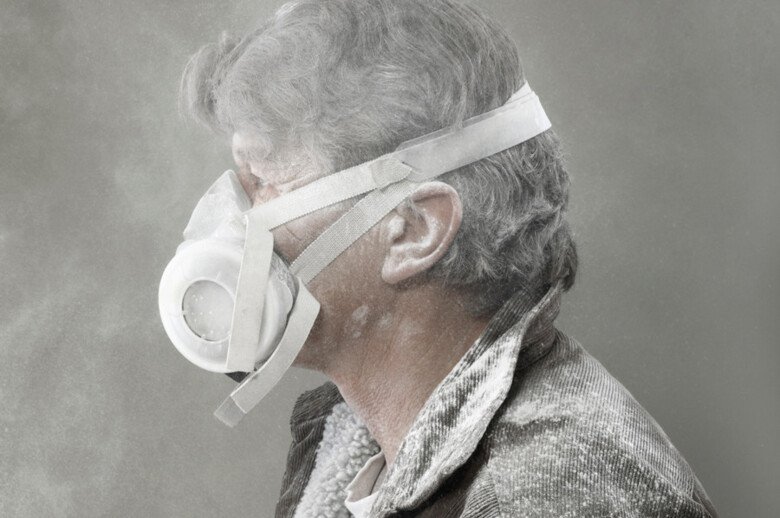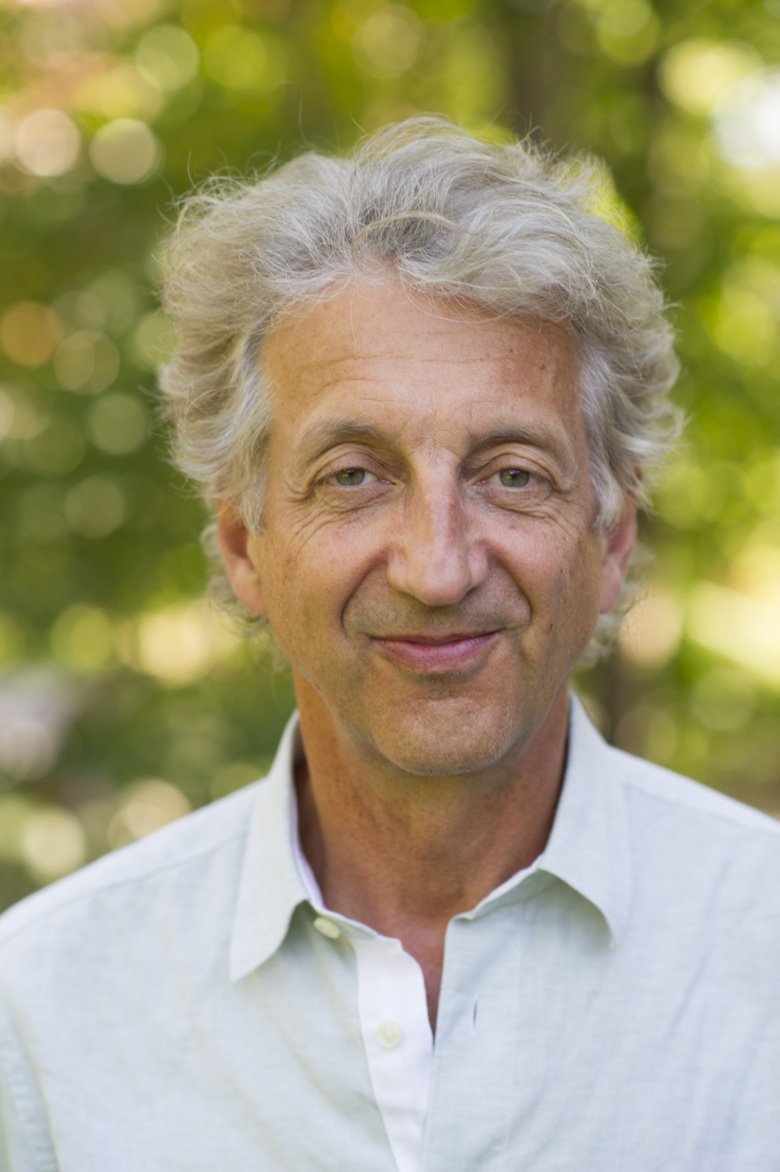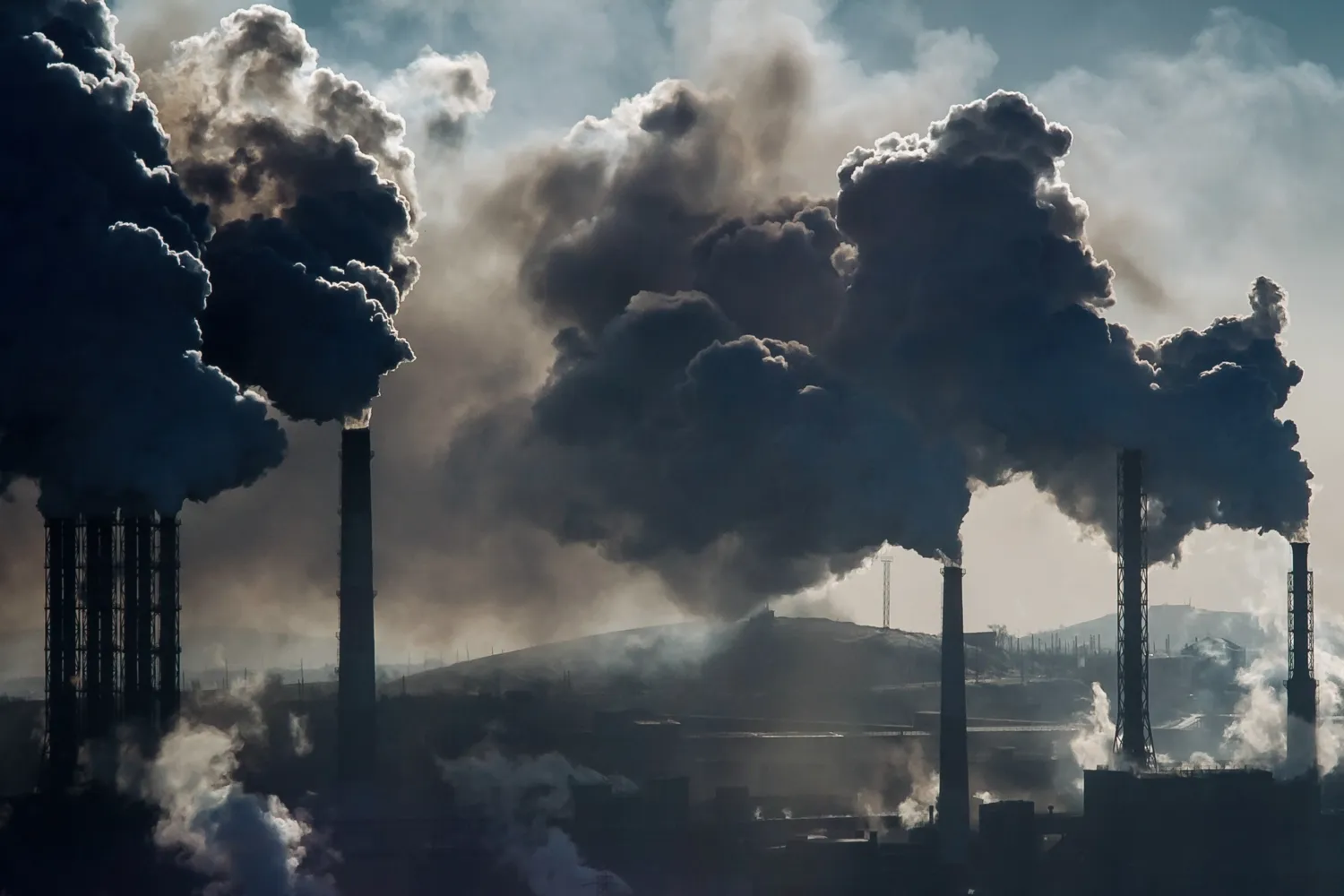The dirty truth about dust
Some people say that no one has ever died from a little dust. On the contrary, say others, dust is deadly. In reality, not all dust can be tarred with the same brush. Here is your guide to the dirt on earth – and on the moon.
Text: Ola Danielsson, first published in Medicinsk Vetenskap, 2 2016

When Neil Armstrong and the other astronauts walked on the moon in the 1960s and 70s, small clouds of moon dust puffed up around each footstep. It really flew up when they went for a drive in the moon buggy. So much so that they were forced to stop and build an improvised mudflap with material from the moon lander.
Back in the space capsule, they took off their dirty spacesuits as if was any other day at work. In pictures from inside the space capsule, the astronaut Eugene Cernan looks like a happy miner, covered in dust and with a big smile on his face.
But extraterrestrial dust is not like other dust. The astronauts noted that it smelled remarkably strongly of burned gunpowder. And it stuck to everything. The astronaut Jack Schmitt was the first to be affected by a mysterious space cold.

“It was really crazy how they acted, that they didn't store the spacesuits separately. We now consider moon dust to be very hazardous,” explains Lars Karlsson, researcher at the Department of Physiology and Pharmacology, Karolinska Institutet.
Fine as flour
The dust has been described as being fine as flour, but as rough as sandpaper. It is thought to have been created through millions of years of bombardment by micrometeorites that have partly transformed the top layer of stone into glass. Further meteorites have then crushed this glass into increasingly fine particles.
Lars Karlsson, who is conducting research concerning human physiology in space, describes how moon dust is a serious impediment to future moon landings. Together with an international research team, he has analysed how moon dust is thought to affect the human body. According to the researchers' hypotheses, moon dust has pretty much all of the bad properties dust can have.
“Firstly, it consists of very sharp particles that cut into the tissues. Secondly, it is irradiated with cosmic radiation, which we believe makes it electrically charged and hyper-reactive – this means that it sticks to everything and reacts chemically with everything it comes into contact with. Thirdly, it contains many small particles that can penetrate barriers such as human skin and lung tissue,” says Lars Karlsson.
Combined with low or non-existent gravity, which means that the dust that is stirred up does not fall down again, this makes it really problematic.
Is there anything like moon dust on earth?
“No, not even the moon dust that has been brought back to earth is like moon dust any more. When it reacts with the earth's atmosphere, its properties change. Attempts have been made to preserve it in airtight containers, but without success. The closest thing to moon dust that exists on earth is newly formed ash from volcanoes,” says Lars Karlsson.
His is one of few researchers who have the opportunity to gain access to moon dust. Together with his colleague Dag Linnarsson, he is now attempting to get the funding together to return it to its original state and study it further. The fact is there is interest from NASA and other space financiers to learn more about the properties and health effects of moon dust. Because one thing is clear – if humans are to return to the moon, the dust issue must be resolved.
Particles become rounded
On the earth the windy atmosphere and the rain mean that dust particles become rounded and precipitation and gravity mean that the dust eventually ends up on the ground. The dust is not electrically charged and the oxygen in the air means that it is not as chemically aggressive as it is on the moon. But even here, some groups of workers are exposed to chemically reactive dust, for example siliceous dust in the stone industry.
And visiting something that looks similar to a lunar landscape does not require space travel. All you have to do is take a walk to Torsplan in Stockholm, where you will find one of Europe's largest construction sites. The construction of the new Karolinska University Hospital and its new neighbouring blocks looks, in places, like a bomb site. Which it is actually – the air smells strongly of burned gunpowder after the most recent explosion.

Towering above the disarray is a newly constructed building on the tenth floor of which industrial hygienist Pernilla Wiebert has her office. She works at the Centre of Occupational and Environmental Medicine at Stockholm County Council, helping patients who suffer from work-related health problems, and she conducts research concerning dust and occupational health problems at the Institute of Environmental Medicine, Karolinska Institutet.
The premises are quiet, bright and fresh. The patients, some of whom have developed a sensitivity to dust and strong smells, are received on wooden chairs that are easy to keep clean.
“We have a very good cleaner here,” says Pernilla Wiebert. She explains that some of the patients have been exposed to quartz dust, which is still a significant work environment problem in the construction industry.
Consists of hard particles of silica
As with moon dust, quartz dust consists of hard particles of silica that the body cannot break down. The particles are instead encapsulated in scar tissue in the pulmonary alveoli, which leads in the long term to solidified lungs and the incurable disease silicosis.
“In the long term, silicosis is a deadly disease, so it is serious,” explains Pernilla Wiebert.
Quartz dust also increases the risk of the lung disease COPD, which is more common among construction workers than others. The fact that it is carcinogenic is also known because of studies such as that at Gustavsberg's porcelain factory, where the levels of quartz dust were ten times higher than the limit value in the 1970s and 80s. When Pernilla Wiebert and her research colleagues investigated the incidence of cancer among former employees, it was shown that more of them than normal had contracted lung cancer, as well as urinary tract cancers. Quartz is present in the bedrock and soil in Sweden and in products such a concrete, ceramic and glass. The problem of quartz dust is greatest in the construction industry and mining and stone industry, but is also found in industries such as agriculture and cleaning work such as sandblasting.
The other day she visited the construction site on the other side of the street and was “really impressed” by the efforts being made in terms of the working environment. But in general, she is not at all satisfied.
“Exposure to dust has decreased since the problem was first noted, but we are now seeing an increase in the problem again. Those people who were committed to this problem have subsequently been replaced and it is so much easier to focus on the risk of accidents. Dust is more deceptive as it effects people in the long term,” she says.
Protecting yourself requires good cleaning procedures and the use of a breathing mask – and the beard has to go.
“A breathing mask must fit tightly and works poorly when you have a beard or stubble. There are good ways to protect yourself, but such important details are often neglected. If only the knowledge we have had been used, there would not be a problem,” says Pernilla Wiebert.
Dust is also deceptive, as the most common type can neither be seen nor smelled. Larger particles can certainly worsen asthma and cause allergies, if they contain allergens.
Irritation in the nose and throat
But the cilia in the airways are able to quickly transport them to the throat where they are swallowed, and they are clearly noticeable as an irritation in the nose and throat. Small particles, that are found in dust such as quartz dust, reach as far down as the lungs' capillaries and alveoli, where they remain for a longer period or are encapsulated permanently.
It is uncertain to what extent small particles penetrate even further, past the lungs, and where they end up. In order to answer this question, Pernilla Wiebert, as part of the work on her thesis, is using an apparatus that generates a cloud of carbon particles, every one of which is labelled with a radioactive isotope that makes it traceable. The radioactive carbon cloud is then inhaled by test subjects.
“I thought that some of the particles would perhaps enter the bloodstream. But it was shown that almost all of the particles, even the smallest, remained in the lungs,” she says.
That was the case with the carbon cloud specifically. But other researchers have found inhaled nanoparticles in organs such as the liver, kidneys and brain. Even if the particles normally remain in the lungs, this does not mean that they are otherwise harmless to the body. Inflammation in the lungs can lead to inflammation in the cardiovascular system and myocardial infarction; something that is more common within occupations with a high level of exposure to particles. The risk is particularly high within occupations with a high level of exposure to small particles from combustion, such as engine exhaust.
Pernilla Wiebert is currently working on a research project that compares the incidence of myocardial infarction in various occupations with data concerning exposure to particles – the goal is to gain new knowledge about which types of particles are most hazardous.
Dust with a biological origin may contain, for example, animal proteins, bacteria and fungal spores, and in high doses can cause influenza-like symptoms known as ODTS (organic dust toxic syndrome). Long-term inhalation can cause inflammatory changes in the lungs that researchers call extrinsic allergic alveolitis, but in specific occupations may go by names such as farmer's lung, bird fancier's lung and cheese washer's lung.
Swineherd's have an increased risk
The dust that is formed in pigsties is particularly nasty. Swineherd's have an increased risk of developing ODTS, as well as the lung diseases chronic bronchitis and COPD, which normally affect mainly smokers. Lena Palmberg, researcher at the Institute for Environmental Medicine, has shown that swineherds have an impaired natural immune response and a chronic inflammation in the respiratory tract. Test subjects who try out the work temporarily also quickly get sharply increased levels of white blood cells and the signs of respiratory tract inflammation. The research indicates that it is bacteria or bacterial components from the pigs' excrement that is having a detrimental impact on the lungs of swineherds.
Even those who do not have dusty occupations are unavoidably exposed to dust in the home and outdoor environments. Common household dust consists largely of relatively harmless fragments of dead skin and textile fibres. But if the dust contains substances that disrupt hormones or other chemicals from the surroundings, there is a fear that this may lead to a serious impact on health in the long term.
This is currently being investigated in several studies at Karolinska Institutet, among them a project in which dust in preschools is being analysed. The confirmed health effects are even greater when it comes to dust outdoors. However, as opposed to dusty occupations, where a few individuals have a markedly increased risk of becoming ill, dusty cities lead to a fairly small increase in various health risks, but for a large number of people.

“For an individual, the increase in risk is not particularly large. But when looking at the entire population, particles in the air cause many premature deaths each year,” says Tom Bellander, professor of environmental epidemiology at the Institute of Environmental Medicine, Karolinska Institutet.
In spring, cities become particularly dusty as the streets dry out and the particles that have been stored by damp roads over winter are stirred up into the air. Small particles from combustion are generally regarded as having the most serious health effects. In recent years, however, the perception that larger particles, such as those that arise when studded tires wear the road, would at worst be an irritant, has been re-evaluated. “We know now, from studies of environments in which sand from the Sahara often blows in, that larger particles also contribute to increased mortality,” says Tom Bellander.
Regulate particle levels
According to Tom Bellander, it is generally very difficult to determine what makes a particular particle harmful and to measure exactly which particles are responsible for the detrimental health effects. The guidelines that are used to regulate particle levels in the air focus on the particles' size. The World Health Organisation's guidelines state, for example, that the air should not contain more than 10 micrograms per cubic metre of particles that are up to 2.5 micrometres in size in the long term.
There are also statutory standards for these and for somewhat larger particles. But Tom Bellander believes that a major deficiency with the guidelines is that they do not take greater account of the shape, origin and chemical properties of the particles. Quite simply, we do not know enough to enable this.
At the political level, Tom Bellander believes that there is a lot to do if we are to reduce the level of particles in the air. The goal should be to reduce emissions and move them from environments in which people live. As an individual, there is not much you can do aside from living in a place that is as clean as possible.
“If you live in Beijing, Delhi or Mexico City, I think this is something very relevant to be thinking about. In Sweden, this is really more one factor among others to think about when you plan to move, provided you do not have a specific sensitivity that gives you problems.”
But understandably, the advice to move cannot be followed by everyone.
“The emissions are where the people are. So if everyone moved out of the city centre, it won't be long before a large proportion of the air pollution moves too.”
Facts: This is why dust can be harmful
Dust can consist of almost anything and be harmless or deadly. Here are some properties of dust particles that govern their impact on health.
Size. Small particles such as exhaust particles float for longer in the air, are more easily inhaled and get deeper into the lungs.
Shape. Particles with a large surface area such as moon dust have a greater risk of reacting with the body's cells and tissues.
Reactivity. The surface of particles can be chemically reactive or stable. This determines what reactions can take place when they come into contact with the human body.
Lifespan. Some particles can be broken down by the body, others cannot. For example, quartz dust remains in the body, which increases the risk of some health effects.
Facts: This is where dust particles are found
Dust can consist of, for example, pollen, bacteria, smoke, ash, salt crystals from the sea and small pieces of dirt or stone.
There is often a grain of dust in the middle of a raindrop. Raindrops are actually formed around small grains of dust or particles in the atmosphere known as aerosols.
The more dust the air contains, the prettier the sunset. This is because particles help to disperse blue light and let through more of the red colours.
The Sahara Desert is the greatest source of dust in the world. Every year, 180 million tonnes are blown out over the Atlantic. Some reaches South America, where it helps to fertilise the Amazon Rain Forest.
More reading
 Photo: GettyImages,Getty Images/iStockphoto
Photo: GettyImages,Getty Images/iStockphotoAir pollution — the dirt we breathe
Air pollution is one of the most significant health threats in the world. In Sweden, air quality is improving, but in other parts of the world, the trend is going in the wrong direction. At the same time, research shows that even very low levels of pollution, below legal limits, harm our health.
 Photo: N/A
Photo: N/ACleaning — not to be swept under the rug
In the healthcare setting, keeping things clean can be vital to prevent the spread of dangerous bacteria. But in a household, what’s best for your health – to live pretty dirty or to be a clean freak? Read our interviews with the researchers who have a pure interest in cleaning.
 Photo: Stefan Zimmerman
Photo: Stefan ZimmermanIncreased risk of type 2 diabetes in some occupations
Drivers, factory workers, and cleaners are three times more likely to develop type 2 diabetes than teachers and physiotherapists., according to a study from Karolinska Institutet.
